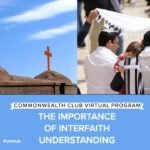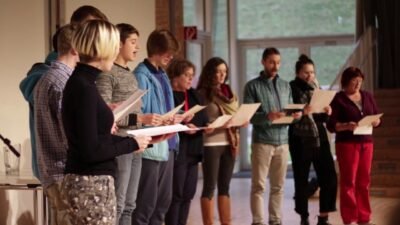Hi there. In this video, we’ve got a special guest. Sara Bassendale, one of the lead trainers from to Be a Better Guide Academy. Now Sara, to start this video, we’re going to do something really funny. Oh yeah Why is that? That’s just
Something we like to do. Make people laugh but something really clever and off the top, it’s kind of a thing. But your other videos weren’t funny. Hi there it’s Erin Kelsey from the Be a Better Guide Academy. Today, we are going to be
Talking about the book “Interpretation making a difference on purpose” by Dr. Sam ham from the University of Idaho. So what got us excited about doing this video is that the field of interpretation is probably better known to guides that work in the natural or environmental field. So for example,
National park rangers or a guide that works in the zoo or aquarium. This is what we love at be a better guide. Learning from one another and sharing best practices that work in one field and using them to make us better tour
Leaders. So we’re going to break down one of Dr. hams’ central teachings on interpretation. Essentially, the TORE method, T.O.R.E. Let’s take a look. Dr. Ham defines interpretation as a process aimed of provoking audiences to do their own thinking and thereby develop their own understanding of your topic by
Presenting information with a strong and relevant being. Researchers have found that audiences are more engaged and more likely to really think about what you’re saying. So in other words, it’s putting together your information in a way that resonates with your audience. The T.O.R.E or TORE model developed by Dr. Ham is an
Acronym and guide to effective interpretation. These four qualities actually emerge from a huge body of research on how humans respond to communication when it’s done really well. Interpretation needs to be four things. One, it needs to have a theme. Two, be organized. Three, to be relevant and Four,
Be enjoyable. So let’s take a look at each of these. Your information should have a theme while presenting or sharing information on a topic. A theme makes your job easier because it gives you some guidelines for what to include, what
To exclude and what to emphasize. Now, don’t confuse a topic with a theme. So topic is your kind of general subject matter but a theme is really a specific idea or the main point that you want to communicate to your group. And themes are
Great because it allows you to answer that question, of all the things that I know, what am I going to share with my group today. For example, let’s say our topic is ants. The theme could be, asked to teach present-day miners a thing or
Two about underground architecture or answer trying to solve architectural problems in ways that we’re still trying to understand. As a guideline, we want our theme to be simple and we want to be able to see it in a single sentence. Your information should be organized. Interpretation is organized when it’s
Presented in a way that’s easy to follow. In other words, interpretive moments are at their best when your audience doesn’t need to do a ton of work. This can sometimes happen if your material is dense, complicated or hard to follow. Dr.
Ham references over a dozen studies that show most people can handle about four different pieces of information at a time. Meaning that, you want no more than four main ideas with your senior. If our theme is ants could teach present-day miners a thing or two about underground
Architecture. Our four main talking points could be size and scaling, design, efficiency and master communicators and we could have some talking points around each of these sub schemes instead of listing unconnected facts or delivering a stream of consciousness. We want to take the time to organize our delivery.
Remember, no more than four additional ideas for our central theme. Three your information should be relevant. A presentation or an interpretive moment on tour that’s relevant to an audience have two characteristics. It’s gonna be personal and it’s going to be meaningful. Now meaningful in this instance simply
Means that we’ve got to connect new ideas that we’re sharing two ideas that are already present in the minds of our audience. If you think about how any of us approach new information we relate it to past experience or have a context for
It. So the classic example is something that’s not meaningful, if something that’s causing confusion or maybe using too many technical terms, jargon or abbreviations. You see time we’ve got to dynamically predominate those enterprise-level uses as we don’t and it’s going to show up in our KPD and
If it shows up in our KPD and you my friend are SOL. I couldn’t agree more. So we can use examples, analogies, contrast similes or metaphors to help make this connection. For example, to explain the strength of an ant to a
Group, we could ask them to imagine their father picking up an SUV and walking down the street. For our topic or presentation to be relevant, it’s got to be meaningful which just means, we’ve got to relate it to something our
Audience knows but we also have to relate it to something that they care about and that’s where that personal side comes in. It’s great thinking, how the heck do I do that? Well, it turns out it might be easier than you think. Studies have shown that there are universal concepts that human
Beings back through time and across cultures all care about. You might recognize some of these things. Their the emotions so, happiness, sadness, anger jealousy. It could be some of our biological functions hunger and thirst and birth and death and then of course, our fascination with mystery with the
Cosmos and ethics and morality. Almost every story movie or television series revolves around one or more of these universal concepts. Use these universals to make your audience care about your theme and create a deeper connection with your material. For example, beyond impressing people with all of our
Amazing anthrax, talk about how important they are to us as human beings without ants to disperse seeds to pollinate plants and aerate soil. We humans would lose all stars of our garden farms and flower beds. And lastly, your information and interpretation should be enjoyable. Successful communication is enjoyable
When it’s mentally pleasing or satisfying in some way. So here we can think of those guides who are entertaining, engaging, maybe really funny but it also covers the fact that lots of us just love learning and sometimes the things we’re learning about may be scary or sad or surprising or even depressing.
Most audiences will enjoy being involved in some way and will appreciate your humor and levity. Engaging their five senses is a great idea as well as using interaction, music, props and visual aids. Generally, we want to try to be informal and use casual or conversational tone. Just remember, as Louie Armstrong
Would say, when you smile, the whole world smiles with you. So if you’re relaxed and having fun as a cheerleader, your audience is going to be more relaxed and have more fun too. So as a quick recap, here’s the full TORE method. Your interpretive moment should be somatic, organized, relevant and enjoyable. Think
Of this acronym as another tool in your toolbox for inspiring your guests to care more deeply about the information you share. To help you with this, we’ve created a PDF cheat sheet of the TORE method. Think of this as a tool another resource
That you can use when you’re working on your tour or maybe creating a new and moment or a special presentation on tour. You can grab that using the link below. We also highly recommend grabbing Dr. Ham’s book, Interpretation making a difference on purpose. There’s tons of great tips in there for
Improving your tour. You can find a link to that book down below. Mm-hmm we’ll put that link there too. We also would ask you to share this video if you’re inspired, you have a friend or colleague or somebody who might benefit from it
And in the comments, let us know if you have tips for having better interpretive moments on tour. Thank you so much for being here and we’ll see you next time. One of the best things we found when making this video is there’s something
Called a corporate BS generator. If you can type that in Google but essentially a website, you hit generate and it mishmashes all kinds of corporate jargon together. Sarah’s going to read some out for us. Okay ready, generate. Seamlessly whiteboard standalone human capital. Generate. Dynamically exploit
Cloud-based niche markets. Well that’s a good one. Generate. Compelling lease indicate out-of-the-box best practices. So good. Check it out. The corporate BS generator
#Interpretation #Tips #Tour #Guides #Interpreting #Culture #Environment #History #Heritage







No comment yet, add your voice below!